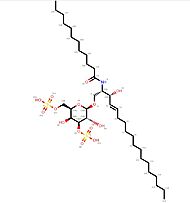Sandbox Reserved 1660
From Proteopedia
| This Sandbox is Reserved from 26/11/2020, through 26/11/2021 for use in the course "Structural Biology" taught by Bruno Kieffer at the University of Strasbourg, ESBS. This reservation includes Sandbox Reserved 1643 through Sandbox Reserved 1664. |
To get started:
More help: Help:Editing |
The CD1 family
CD1 (Cluster of Differentiation 1) is a family of glycoproteins involved in the presentation of antigens on the surface of specific cells to NKT cells. CD1 molecules are notably expressed by splenic dendritic cells, marginal zone B cells and CD4+CD8+ thymocytes. The CD1 family is made of three groups. Group 1 is composed of CD1a, b and c proteins and group 2 is composed of CD1d proteins. The third group is the CD1e, which shares some partial characteristics from groups 1 and 2[1] [2].
FunctionRole in the immune systemCD1d protein is a molecule of the immune system, involved in the presentation of a lipid antigen to NKT cells, which are a subset of T cells. Indeed, these proteins are located on the plasma membrane of APC cells. When the recognition between the CD1d bound to its lipid ligand and the TCR of a NKT cell occurs, the lymphocyte turns out to be activated. Thus, the production of cytotoxic molecules such as interleukin-4 and IFN-gamma is triggered by this activation, leading to a Th2 or Th1 immune response respectively[3][4]. Therefore, CD1d proteins are precursors of the adaptive immune reaction. As a result, a deficiency of CD1d protein may lead to a deficiency of the NKT cells functioning and thus to autoimmune diseases and cancers. Ligands presented by CD1dThe ligands that can be presented by CD1d to NKT or other CD1d-restricted T cells are quite specific, because the recognition is based on a hydrophobic interaction between the ligand and the CD1d molecule. Thus, it limits the risk for other similar molecules to bind CD1d proteins and ensures that the immune response is accurate. Among these CD1d ligands, glycolipids from a marine sponge (alphagalactosylceramide or α-GalCer), bacterial glycolipids, normal endogenous glycolipids, tumor-derived phospholipids and glycolipids, and nonlipidic molecules have been described[5].
Structure of mouse CD1d
is made of 2 chains [6]:
CD1d molecules are structurally similar to Major Histocompatibility Complex Class I, but present lipid antigens as opposed to peptides. Thus the cleft where the ligand can bind is different between MHC molecules and CD1d molecules. Indeed, the hydrophobic cleft of CD1d has a narrow opening.The recognition between the protein and its ligand occurs at a specific hydrophobic spot which creates an appropriate environment for the interaction to happen. This is located at the A' and F' pockets in the region of the alpha helices[8].
Impact of ligand-bindingConformational variationThe stability of the CD1d-glycolipid complexes has an impact on the cytokine release (cell signaling). Conformational variations that would stabilize the F’-pocket (primary site of interaction with the T cell receptor, NKT TCR) might increase CD1d affinity for the NKT TCR[4][8]. The binding of a ligand (such as C12-di-sulfatide) leads to of CD1d molecule (The moving molecules are the oligosaccharides molecules ; the ligand is not represented). CD1d affinityCD1d proteins lipid recognition is based on the interaction of the protein with its ligand. Nevertheless, the interaction relies on two recognitions. The first one is the recognition of the head of the lipid and the second one is the recognition of the length of the molecule. Because there are more than one condition to fill in order to interact with CD1d proteins, the affinity for a lipid depends itself on a plurality of parameters which modulates it[4][8][9]. ApplicationsImmunotherapeutic toolThe presentation of several kinds of ligands can have immunopotentiating effects, such as serving as an adjuvant in malaria vaccine or resulting in a more rapid clearance of certain virus infections. They can also be protective in autoimmune diseases or cancer[4][5][10]. The orientation of the immune pathway (Th1 or Th2) due to the cytokines secretion by NKT cells is dependant of the affinity of the ligand for CD1d molecule. The design of agonists with a higher or lower affinity for CD1d could also lead to therapeutic effects, due to the possibility of specifically directing the immune response towards the Th1 or Th2 pathway [8] [11]. NKT cells markerCD1 molecules can also be used as NKT cell markers. Indeed, a CD1 molecule can be engineered to become fluorescent by binding a fluorescent-potent molecule to it. When the engineered complex interacts with a NKT cell, the fluorescent signal is emitted and therefore the NKT cells can be spotted[12]. See AlsoReferences
| ||||||||||||


